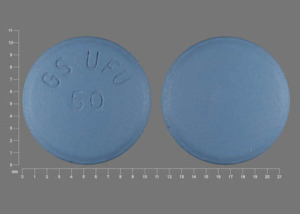Promacta Disease Interactions
There are 4 disease interactions with Promacta (eltrombopag).
Eltrombopag (applies to Promacta) hepatitis C
Major Potential Hazard, Moderate plausibility. Applicable conditions: Infectious Hepatitis
Eltrombopag has shown to increase the risk of hepatic decompensation in patients with chronic hepatitis C in treatment with interferon and ribavirin. Clinical trials reported that ascites and encephalopathy occurred more frequently on these patients than in the placebo arm. Patients with chronic hepatitis and receiving antiviral treatment should be closely monitored. The manufacturers also recommend to discontinue eltrombopag if the antiviral therapy is discontinued.
References
- (2008) "Product Information. Promacta (eltrombopag)." GlaxoSmithKline
Eltrombopag (applies to Promacta) hepatotoxicity / hepatic dysfunction
Major Potential Hazard, Moderate plausibility. Applicable conditions: Liver Disease
Eltrombopag can cause liver enzyme elevations. Monitor ALT, AST and bilirubin prior to treatment initiation, and every 2 weeks during dose adjustment phase and then monthly. If abnormalities are confirmed, monitor serum liver tests weekly until resolved or stabilized. Treatment should be discontinued if ALT levels increase to greater than or equal to 3 x ULN in patients with normal liver function, or greater or equal to 3 x baseline in patients with pretreatment transaminase elevations that are progressively increasing, persist for 4 weeks or more, also have an increase in bilirubin, or also have clinical symptoms of liver injury or hepatic decompensation.
Hepatic impairment influences the exposure to eltrombopag. The initial dose should be reduced in patients with chronic ITP or severe aplastic anemia who have hepatic impairment. No dose adjustment is required on patients with chronic hepatitis C and hepatic impairment.
References
- (2008) "Product Information. Promacta (eltrombopag)." GlaxoSmithKline
Eltrombopag (applies to Promacta) cataracts
Moderate Potential Hazard, Moderate plausibility.
In clinical trials, eltrombopag developed or worsened cataracts in 7% of the patients receiving treatment. A baseline ocular examination prior to administration of eltrombopag is recommended, and regular monitoring for signs and symptoms of cataracts should be performed regularly during treatment.
References
- (2008) "Product Information. Promacta (eltrombopag)." GlaxoSmithKline
TPO receptor agonists (applies to Promacta) thrombotic / thromboembolic complications
Moderate Potential Hazard, Moderate plausibility. Applicable conditions: Thrombotic/Thromboembolic Disorder, History - Thrombotic/Thromboembolic Disorder, Protein C Deficiency
Thromboembolic complications may result from increases in platelet counts with TPO receptor agonists such as avatrombopag, lusutrombopag, and eltrombopag. Consider the potential for increased risk of thromboembolism when administering these medications to patients with known risk factors for thromboembolism, including genetic prothrombotic conditions (Factor V Leiden, Prothrombin 20210 A, Antithrombin deficiency or Protein C or S deficiency).
References
- (2008) "Product Information. Promacta (eltrombopag)." GlaxoSmithKline
- (2018) "Product Information. Doptelet (avatrombopag)." Dova Pharmaceuticals
- (2018) "Product Information. Mulpleta (lusutrombopag)." Shionogi USA Inc
Promacta drug interactions
There are 177 drug interactions with Promacta (eltrombopag).
Promacta alcohol/food interactions
There are 2 alcohol/food interactions with Promacta (eltrombopag).
More about Promacta (eltrombopag)
- Promacta consumer information
- Check interactions
- Compare alternatives
- Pricing & coupons
- Reviews (17)
- Drug images
- Side effects
- Dosage information
- Patient tips
- During pregnancy
- FDA approval history
- Drug class: platelet-stimulating agents
- Breastfeeding
- En español
Related treatment guides
Drug Interaction Classification
| Highly clinically significant. Avoid combinations; the risk of the interaction outweighs the benefit. | |
| Moderately clinically significant. Usually avoid combinations; use it only under special circumstances. | |
| Minimally clinically significant. Minimize risk; assess risk and consider an alternative drug, take steps to circumvent the interaction risk and/or institute a monitoring plan. | |
| No interaction information available. |
Further information
Always consult your healthcare provider to ensure the information displayed on this page applies to your personal circumstances.


